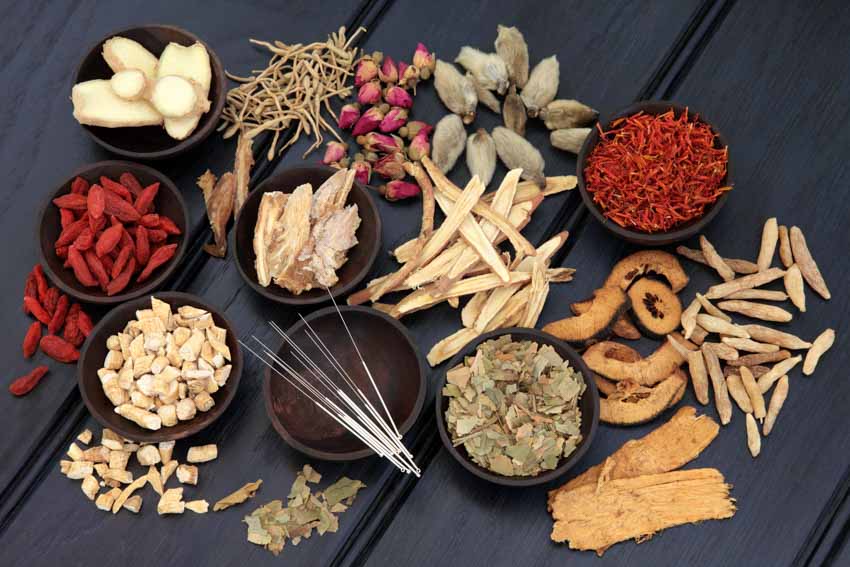
Acupuncture and herbal medicine are effective for the treatment of hyperlipidemia (high cholesterol and triglycerides). Wuji Hospital of Traditional Chinese Medicine (Hebei) researchers determined that coronary heart disease patients get significant improvements in blood lipid profiles when acupuncture and herbal medicine are added to standard care. [i] The results indicate that an integrative treatment protocol using Chinese medicine plus usual care produces superior patient outcomes compared with usual care monotherapy.
The study’s outcome measures included TC (total cholesterol), TG (triglycerides), LDL-C (low-density lipoprotein cholesterol), and HDL-C (high-density lipoprotein cholesterol). Elevated TC, TG, and LDL-C levels are associated with an increased risk of cardiovascular and cerebrovascular disease, while elevated HDL-C levels are associated with a reduced risk of these conditions. The study found that the addition of warm needle acupuncture and medicinal herbal tea to standard care reduces TC, TG, and LDL-C levels, while simultaneously increasing HDL-C levels. Across all data points, the Chinese medicine plus usual care protocol produced superior results for changes in TC, TC, LDL-C, and HDL-C.
Eighty-four patients diagnosed with coronary heart disease and hyperlipidemia were recruited for the study and were sequentially assigned to receive either standard care monotherapy or standard care plus warm needle acupuncture and herbal tea. The standard care group was comprised of 25 male and 17 female participants ages 43–74 years (mean age 61.5). This group included 17 patients with concurrent hypertension and 19 patients with concurrent diabetes. The warm needle acupuncture group was comprised of 23 male and 19 female participants, ages 47–78 years (mean age 62.4). This group included 14 patients with concurrent hypertension and 21 patients with concurrent diabetes.
Standard Care Protocol
All participants received standard care including anticoagulation and vasodilation treatments. All participants were also prescribed simvastatin, a drug frequently used to reduce LDL-C cholesterol, while also having some anti-inflammatory effects. A simvastatin dose of 40mg was taken daily for a total of 16 weeks during the study.
Warm Needle Acupuncture And Herbs
In addition to standard care, participants in the warm needle acupuncture group were treated with warm needle acupuncture and herbal tea. Acupuncture was administered at the following acupoints:
- Shousanli (LI10)
- Chengshan (BL57)
- Fengshi (GB31)
- Heding (extra point)
- Tianshu (ST25)
- Fenglong (ST40)
- Xuanzhong (GB39)
- Yangchi (TB4)
Following standard disinfection, needles were inserted and manipulated using lifting, thrusting, twisting, and rotating techniques to elicit deqi. A piece of moxa roll was used to sheath the needle handle and was ignited so that a warming sensation occurred below the needle and spread to the surrounding area. Treatments lasted 30 minutes and were administered daily. Two weeks of treatment made up one course, and a total of four courses were administered during the study.
The medicinal herbal tea was formulated according to the principles of TCM (traditional Chinese medicine), utilizing classic principles of strengthening the spleen, regulating qi, dispelling stasis, and freeing the network vessels. The formula was comprised the following herbs:
- Gou Qi Zi 3g
- Dan Shen 3g
- Shan Zha 3g
- Sang Ji Sheng 3g
- Cao Jue Ming 3g
- He Ye 3g
- Chen Pi 3g
The herbs were soaked in boiling water for 30 minutes before drinking the resulting tea. The formula was deemed suitable for long-term use and was administered for the duration of the investigation.
Outcomes and Discussion
Mean baseline TC, TG, LDL-C, and HDL-C in the standard care group was 6.22mmol/L, 2.91mmol/L, 4.15mmol/L, and 1.37mmol/L respectively. Corresponding scores in the warm needle acupuncture group were 6.27mmol/L, 2.83mmol/L, 4.14mmol/L, and 1.35mmol/L respectively. There were no significant differences in blood lipid profiles between the two groups at this stage, which was prior to all treatments.
Following treatment, the standard care group’s mean TC decreased to 5.94mmol/L, mean TG decreased to 2.37mmol/L, mean LDL-C decreased to 3.62mmol/L, and mean HDL-C increased to 1.43mmol/L. In the warm needle acupuncture group, mean TC decreased to 5.12mmol/L, mean TG decreased to 1.90mmol/L, mean LDL-C decreased to 3.20mmol/L, and mean HDL-C increased to 1.58mmol/L. Although both groups saw improvements in their blood lipid profiles, improvements were significantly greater in the warm needle acupuncture group.
In addition to blood lipid profiles, improvements in TCM syndromes were also taken into account. The warm needle acupuncture group experienced significantly greater improvements in this area compared with those who received standard care alone.
The results of this study demonstrate that warm needle acupuncture combined with traditional Chinese medicinal tea provides a useful adjunct to standard care for patients with coronary heart disease and hyperlipidemia. The TCM treatments are suitable for long-term use and potentially reduce the risks associated with cardiovascular or cerebrovascular disease.
Reference:
[i] Ge Yifeng (2019) “Observation of warm acupuncture combined with traditional Chinese medicine tea combined with simvastatin in the treatment of coronary atherosclerosis and the curative effect of patients with sclerosing heart disease (coronary heart disease) hyperlipidemia” Cardiovascular Disease Journal of Integrated Traditional Chinese and Western Medicine Vol. 7(4) pp.161.


